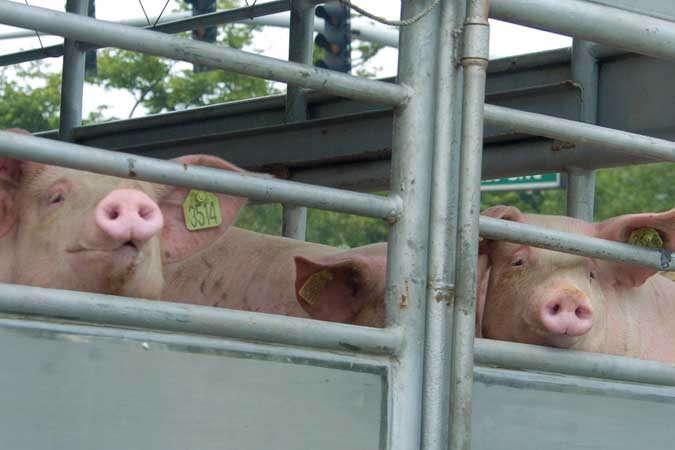
What can we tell about the Philippines’ favorite meat from the archeological record?
THE PIG is usually the centerpiece of our festivals as Filipinos, but have you ever thought about where they came from?
A talk from the Ateneo de Manila Department of Sociology and Anthropology had Dr. Philip Piper, Professor at the School of Archaeology and Anthropology in the Australian National University, presenting his study on the significance of pigs in Philippine prehistoric culture. The talk was titled “Pig Out! The Origin and Prehistoric Social and Cultural Significance of Domestic Pigs in the Philippines,” and was streamed on Facebook on May 18.
It focused on a series of archaeological digs Mr. Piper had done in the past. Tracking pigs is useful for several reasons. “Pigs don’t move themselves over considerable distances and therefore, they must have been moved by people,” he said. “They’re using pigs as a proxy for identifying the movements of people across the region.”
According to him, pigs in the region have their origins “in the region that is now China,” based on reports suggesting the domestication of pigs in a cave in Guangxi about 4,000 years ago, and in Zhejiang 8,000 years ago. “The question still remains open on whether these really are domesticated pigs.” He added that clearer evidence for pig domestication has been recorded at the Neolithic settlements of Nanzhuangtou, “possibly as early as 10,500 cal BP.”
(According to thoughtco.com, the scientific term “cal BP” is an abbreviation for “calibrated years before the present” or “calendar years before the present” and that is a notation which signifies that the raw radiocarbon date cited has been corrected using current methodologies.)
The question is important: it ties up with findings in Vietnam, where pig remains were found amid human settlements, but these were accompanied by animal remains — of reptiles, fish, and several other mammals. “Domestic pigs were integrated into an economic system still heavily reliant on foraging as much as farming,” he said.
Genetics and forensics also come into play in determining where the pigs come from. One such path is the Pacific clade (a clade is a group consisting of an ancestor and all its descendants), which originated in the region around Southern China and Vietnam, and moved on along all the way to the Pacific Islands. The Lanyu pig, meanwhile, moved from Lanyu off the coast of Taiwan to the Philippines, and “doesn’t seem to have moved beyond the archipelago.”
On more familiar ground, he discussed a dig in Nagsabaran, Cagayan Valley, which found a shell midden (ancient refuse heaps useful for archaeologists) that dates from 2500 to 1600 cal BP, atop underlying silts from older periods (from 4000 to 3000 cal BP). Similar postholes are found here as in Vietnam, but the pig remains found here were more intact, suggesting that it was a structure on stilts, and that the refuse was thrown from the edge (heavier traffic would have damaged the bones). Incidentally, according to a paper called “Patterns of Animal Utilization in the Holocene of the Philippines: A Comparison of Faunal Samples from Four Archaeological Sites” by Karen Mudar, Ferdinand Magellan’s chronicler Antonio Pigafetta “observed pigs kept below the houses in the settlement” when they arrived in Cebu (a different region, of course).
Among other animal remains found in Nagsabaran were those of deer, dogs, rays, and sharks.
Mr. Piper identified two kinds of pigs present in that area, Sus philippensis, which is endemic to the Philippines, and Sus scrofa, introduced to the Philippines. Their differences were identified through their teeth (the former pig’s teeth were smaller, among other differences). According to him, the wild pigs outnumbered the domestic pigs 4:1. Does the presence of the wild pigs then present the same situation as in the one in Vietnam? “Yes, and no.”
“Pigs, we know, are important in the Philippines beyond just being economic. They have other important social and religious status,” he said. He draws a parallel between the present-day Ifugao, who still keep ceremonial black pigs differentiated from “more general eating pigs” (in the past, wild endemic pigs; now the European-introduced breeds). “It could possibly be the case. We’re seeing the same sort of retention of black pigs — or the domestic pigs — for particular ceremonial and ritual purposes. This is why we don’t see quite so many of the bones, or teeth in the archaeological record. They’re not being slaughtered at quite the same rates as we see with the eating, or wild pigs.”
He warns though that “We need to be cautious in interpreting human mobility from the introduction of domesticated animals.”
Still, he says, “A lot of our traditions these days, as you can see, have got a long history that extends way back, even to the earliest agricultural Austronesian populations that arrived in the Philippines.” — JL Garcia



